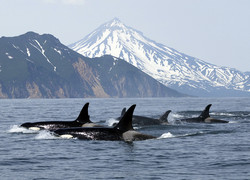The evolution of killer whale dialects
Killer whales have vocal dialects – a unique repertoire of clicks, whistles and calls shared by each pod – similar to bird song or human language. Since dialects are passed from mother to offspring through social learning and copying, scientists believe they may change gradually with time by random copying errors. The EU-funded DIALECT EVOLUTION (Principles of dialect evolution in killer whales) project used both evolutionary biology and human linguistics computational tools to confirm how killer whale dialects evolve. Researchers first created models of the different ways that calls can change when passed on from one generation to the next. These ranged from random call mistakes accumulating over time, to major innovations representing evolutionary 'leaps' between generations. They showed that differences in calls between different whale pods in nature can only be explained by a combination of random errors and innovations. To confirm this model, researchers analysed group call repertoires of two distinct North Pacific killer whale populations containing different group sizes and social stabilities. They also compared Icelandic and Norwegian populations to the North Pacific groups. Overall, the finding that innovations play an important role in dialect evolution agreed with their model. In this case, dialects split over time into distinct groupings, rather than one call type gradually evolving into another. Interestingly, call similarities did not always correlate with genetic relatedness, suggesting major differences between cultural and biological evolution. While biological evolution occurs almost entirely through random genetic errors and natural selection, cultural evolution occurs more quickly via innovation, and includes non-genetic influences. Besides uncovering a universal mechanism of cultural evolution shared by social groups, including humans, this study provides a way to acoustically identify killer whale populations. Monitoring different populations is important for conserving and managing this threatened species.







